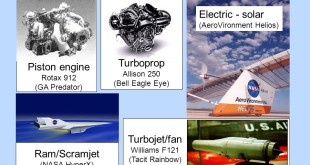Introduction In recent years, Unmanned Aerial Vehicles (UAVs), commonly known as drones, have rapidly evolved from niche technology to indispensable tools for various industries and military applications. However, one of the most significant challenges for UAVs has always been their limited flight time due to onboard battery constraints. To overcome …
Read More »Ensuring Energy Security in a Rapidly Evolving Energy Industry: Challenges and Solutions
Energy is essential to modern society, as it powers our homes, industries, and transportation systems. Without energy, we would not be able to sustain our current standard of living, and many of the technologies and conveniences that we take for granted would not exist. The importance of energy will only …
Read More »UAV Propulsion Technologies: Fueling Long-Endurance Commercial and Military Missions
Introduction Unmanned aerial vehicles (UAVs) have evolved from hobbyist toys to critical tools with applications spanning across various industries. As the demand for UAVs with extended flight endurance continues to grow, propulsion system technologies have risen to the challenge. This blog article explores how cutting-edge UAV propulsion systems are enabling …
Read More »Super Capacitors: Powering Innovations from Electric Transport to Military Directed Energy Weapons
Introduction: In the world of energy storage, supercapacitors have emerged as a game-changing technology. With their unique properties and capabilities, they are revolutionizing diverse sectors, ranging from electric transport to military applications like directed energy weapons. In this blog article, we will explore how supercapacitors are fueling innovations in these …
Read More »Exploring the Future of Renewable Energy: Bio-Solar Cells
Introduction: As the world faces the pressing challenge of transitioning to sustainable and renewable energy sources, scientists and researchers are continuously exploring innovative solutions. Among the emerging technologies, bio-solar cells have gained attention as a promising avenue for generating clean energy. In this article, we delve into the fascinating world …
Read More »Unleashing the Power of Energy Harvesting: Technology, Applications, and Market Dynamics
Introduction: In our quest for sustainable and efficient energy solutions, we often overlook the untapped potential that surrounds us. Energy harvesting, a cutting-edge technology, aims to harness and utilize ambient energy sources to power a wide range of applications. This article explores the remarkable world of energy harvesting, delving into …
Read More »Green hydrogen: an alternative that reduces emissions
As the world grapples with the urgent need to reduce greenhouse gas emissions and combat climate change, finding clean and sustainable energy sources has become paramount. In this quest, green hydrogen has emerged as a promising alternative. Produced through renewable energy sources and water electrolysis, green hydrogen offers a pathway …
Read More »Biofuels Maket to satisfy growing demand of energy and environment-friendly fuels
World economic growth will lead to strong energy demands and consumption. U.S. Energy Information Administration’s latest International Energy Outlook 2017 (IEO2017) projects that world energy consumption will grow by 28% between 2015 and 2040. Most of this growth is expected to come from countries that are not in the Organization …
Read More »Militaries implementing green initiative to counter threat of Climate change
From fighter jets to lumbering aircraft carriers, the armed forces produce substantial emissions: the estimated 59 million metric tonnes of CO2 the US Department of Defense emits each year is more than the annual emissions of many European countries. In the UK, the Ministry of Defence is responsible for around …
Read More »3D Printing revolutionising aerospace propulsion by production of motors & Rockets
3D printing or additive manufacturing is ongoing revolution in manufacturing with its potential to fabricate any complex object and is being utilized from aerospace components to human organs, textiles, metals, buildings and even food. Additive manufacturing is defined by ASTM International as the process of joining materials together, layer by …
Read More » International Defense Security & Technology Your trusted Source for News, Research and Analysis
International Defense Security & Technology Your trusted Source for News, Research and Analysis




